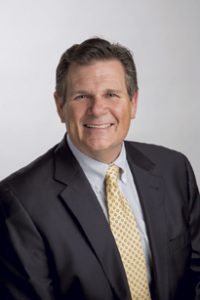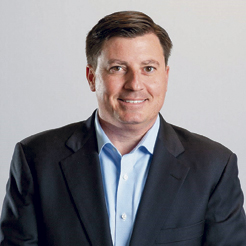WHAT’S IN A NETWORK?
For the independent insurance agency, there’s plenty of strength in sharing resources with other independents
By Lori Widmer
Competing in any market is tough for the independent agency. Competing in a rock-hard market amid a pandemic can make the task seem insurmountable. To find that competitive edge, along with resources and information needed to attract new business, a growing number of successful independent agencies, as well as newer ones, are opting to join insurance networks.
Yet, many agencies large and small are unaware of the benefits networks. What challenges can they help agencies overcome, and how can they positively impact the distribution channel? While what each agency network offers and how it operates differ, the goal is the same: to help member agencies improve access to a broader range of insurance markets, increase knowledge, share resources and experiences, and improve business results.
In a recent Insurance Networks Alliance (INA) conversation, leaders from successful independent insurance agencies-very large, well-established agencies as well as younger, smaller ones-shared why they joined a network, and what benefits their agencies have experienced as a result.
Going bigger
For Henry Marvin, CIC, running an agency 30 years ago was limited to location. Marvin, president of ISU Stephen B. Marvin Agency, said joining a network was an attempt for his agency to reach clients beyond its existing geographic borders. “It was to become more professional. It was to be-come an agency that could look outside of our small area,” he explains, “and think about how to write national accounts or larger accounts, ones that were located in multiple states when we had only been in California.”
Marvin’s Lancaster, California-based agency joined the ISU Agency Network and uses the network’s identity as part of the agency name; such co-branding is optional. “We actually answer the phone with the name of our organization, ISU,” Marvin notes. “We made that decision because we did want a larger presence than just being a local agent. We wanted to have the ability to write a more complex account. We would like the ability to contact another agency to help us maybe with the rules and laws that were in those areas that we just don’t know. We do that all the time now.”
The agency’s network membership has paid off. That network access, Marvin says, has allowed his firm to write in areas that they previously did not have a strong market. Having the network connection, he says, opened their agency up to a national network. “That allowed us to contact those other agents in those other states, or ask about a coverage that we just didn’t know.”
Through his network membership, Marvin says his team learned more about directors and officers coverage and became more knowledgeable about workers compensation. “We weren’t that accomplished at workers comp. That has become our largest line in the property/casualty side since, so it really advanced our abilities with the knowledge of the other people and the trust.”
Joining ISU, he says, has helped his agency meet its goals. “We feel like the agency was able to grow incrementally afterwards. And so each year we would look at it because we get a renewal contract. And we’d say, ‘Yep, it’s a good choice.’ Being able to feel that way each time was important.”
Connecting with carriers
Even in a soft market, establishing relationships with carriers can be a challenge. For Dave Taylor, CEO of FirstMark Insurance Group, head-quartered in Lynnwood, Washington, getting those appointments proved to be a difficult first step. “I needed more than one or two appointments, and we didn’t have any volume to support that early on,” says Taylor, whose agency is seven years young. He found himself in this familiar Catch-22 that many younger agencies struggle to overcome. “I needed a partnership that will allow me to get those appointments, enough meaningful ones and also to have direct access with the carriers.”
Just to have those relationships, he says, was the agency’s top goal. Yet, another goal was equally elusive-profit sharing. “Those revenue dollars were important, and I knew it would take us four or five years to build to a place where we’d be able to do that on our own.”
When his agency looked for a network, they kept those criteria in mind. “It was just trying to find a network that met the needs we had, and allowed us to do what we wanted to do, and then do it in a way that was most economically feasible.”
His agency joined Pacific Interstate Insurance Brokers (PIIB). For the agency, it was a good fit-a simple contract that covered what they needed. Plus, Taylor says, the agency retained ownership of their entire book of business. “There were no handcuffs if we ever needed to leave.” And the agency was able to participate in profit sharing from day one.”
Unlike Marvin, Taylor doesn’t co-brand; the network connection operates behind the scenes, he says. “None of my clients know that we’re part of the network. They just know who FirstMark is.”

“We’re still independent; .. . We own part of this network and share with the volume that it has. That gives us a little clout .”
-Roger Luttrell
Partner, Benton Luttrell Company
Meeting commitments
Being able to meet commitments was what motivated Benton Luttrell Company to join a network. Roger Luttrell, partner with the Van Alstyne, Texas-based agency, says that when his firm joined Combined Agents of America 18 years ago, it was at a time when insurance carriers were requiring “great volumes, every-year commitments. We were struggling with trying to meet those demands.”
Luttrell’s agency was introduced to the idea of an insurance network through friends who were already apart of it and those people helped drive him to join. “We had known them through participating in the association, committees, boards, young agents, whatever it may have been. We knew who they were and the quality that they brought to the table, and that was enough evaluation for us.”
The beauty of membership to Luttrell is the ability to continue to own the client accounts and business. “We’re still independent; we are who we are. We own part of this network, and share with the volume that it has. That gives us a little clout when we’re dealing with a big broker” that the agency might be in competition with.
Being part of the right network too, Luttrell says, is a conscious choice. There are many choices, he says, and agencies should have little trouble finding a good fit. He suggests reviewing contracts, and talking with members. For his agency, the fit is a good one. “It helps to increase the opportunity to have a true partnership” with carriers that understand the regional exposures and can help agencies overcome the losses more easily.
Improving a good business
That same right fit can show up even when you’re not looking for it. When Cleveland, Ohio-based Evarts Tremaine was approached by Keystone, an independent insurance agency network, belonging to a network wasn’t on the company’s radar. “We’d been around a long time, and we had a lot of carrier relationships, good market access, we were profitable, and we thought we did a pretty good job,” says Evarts Tremaine CEO John Hannon, CPCU.
But in conversation with Keystone, which happened thanks to a referral by another agency, the company soon realized there were plenty of resources they were missing out on-resources that Hannon says would have enabled them to go after larger regional and national commercial business.
Hannon says the agency never really considered another network. But there were plenty of questions about how membership would play out-typical among them were whose name would be on the declarations page and how profit sharing would be impacted. Another question loomed, one that nearly all participating agency leaders had asked: If we decide that (the network) is not for us, how do we get out? And would the agency have to change systems and branding in order to be part of the network?
In the end, who Keystone’s members were helped sway the agency’s opinion. “These were agencies that we knew and liked and respected, that we’d met through company meetings, company trips ナ . Part of the thought process was, if it’s good enough for them, it’s probably good enough for us.”
They spent six months calling agencies and pondering the pros and cons, then joined. The membership started paying off immediately. “Right out of the gate, one of the things we hadn’t realized was the intellectual capital that’s provided by joining a network,” says Hannon.
Both agency and clients have benefitted. “It’s not just the 20 of us in our agency at the time, looking at each other in an echo chamber. Now we’ve got this network of 300 agencies and additional carriers that we get to know and trust.”
Another benefit: the agency has joined forces with other member firms. “We’ve actually formed an outside advisory board with six other Keystone partners” that shares information regularly. The group members “share best practices and hold each other accountable, even to reach some goals.”
That’s a far cry from 2010, when the company was wondering if the network was too good to be true. “Since then, we’ve actually said it’s better than we thought it would be. We called around. We were skeptical. We called around partner after partner after partner and asked ‘Give me some downside-what’s the downside?’ and they had a really hard time coming up with one.”
That’s been his agency’s experience, too. “Being a Keystone partner for the last 10 years, I don’t see a lot of downside to it. It’s been a great relationship. It’s helped us grow faster than we would have without it.”

“[W]e hadn’t realized the intellectual capital that’s provided by joining a network. It’s not just the 20 of us in our agency . “
-John Hannon, CPCU
CEO, Evarts Tremaine
Regaining lost time
Sometimes, network membership helps agencies find time that’s lost in planning. For Vinnie Hager, president of JGS Insurance, being a successful 100-year-old agency seemed like enough. But the Holmdel, New Jersey, agency soon realized they were spending quite a bit of time with annual planning-something Hager says was a “time suck away from focusing on agency and organic growth.”
He was also frustrated with changing production goals that carriers were handing down. “The more successful you get with the carriers, the more they want you to write.” That meant more planning, and not enough time focusing on the agency’s growth.
So, when they were approached about joining Agency Network Exchange (ANE), the appeal of regaining the time spent planning appealed. Still, it wasn’t a slam-dunk decision, says Hager. “We did our due diligence.”
After looking at several networks and analyzing options, they selected ANE. For them, he says, it was seeing that the membership was like minded, that these members were focused on growth. They also looked at contracts, and what the exit requirements were should it not be a good fit.
A member for eight years, JGS has gained access to resources not available prior to joining. Plus, new business is easier to place. “You have a new piece of business you haven’t had before. You go to these guys and they’ll tell you who to go to, or they may have a program for it. The resources they bring to the table are invaluable.”
Never mind fears of losing independence or agency revenue representation, says Hager. “What happened was exactly the opposite. We were elevated ナ we had more access to carrier management directly. Also, our contracts were increased, from being a high-level contract to a VIP on many of the contracts that we had.”
So why join an insurance network? “I think the future of independent agencies is in the networks, and the failure to recognize that is going to be the downfall of the smaller independent agencies,” says Hager. “I wouldn’t want to be alone in the future.”
Particularly with so much consolidation in the business, Hager thinks independents need that partnership that a network brings. “I think it’s the future of the independent agents. I think if you want to stay competitive, then you need to be larger, more collaborative. That’s why you should join a network.”
This story was based on an INA webinar held earlier this year and was edited for style, brevity and flow.
The author
Lori Widmer is a Philadelphia-based writer and editor who specializes in insurance and risk management.







